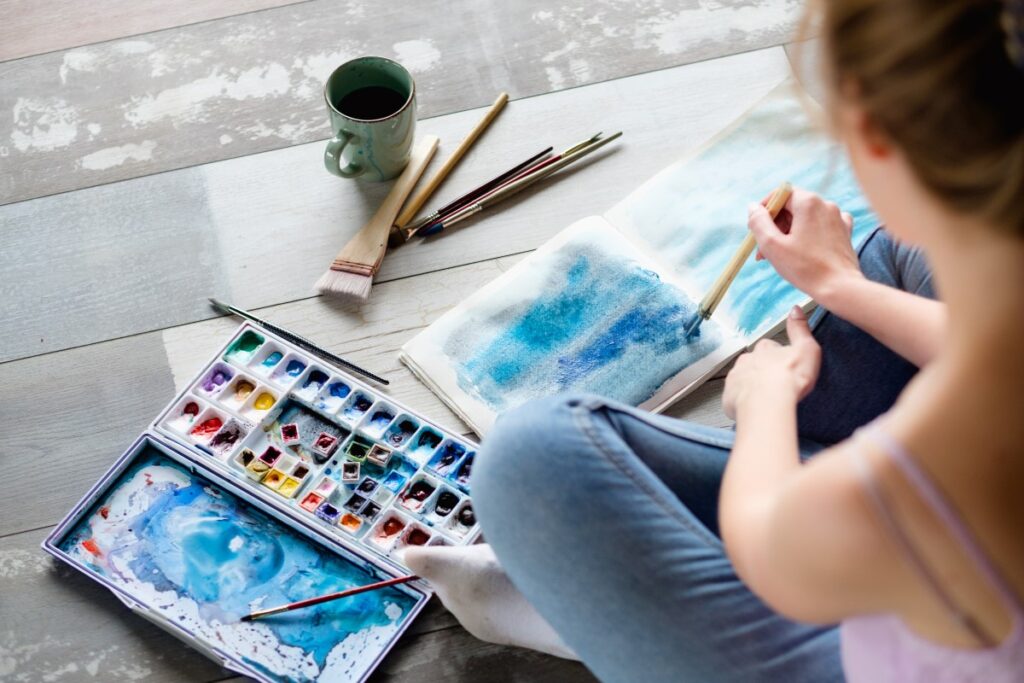We’re living in an era where mental health has dominated a fair bit of discourse. Survivors of traumatic experiences, people living with mental health or developmental disorders have become more vocal about their needs and experiences, and there has been no shortage of advocacy groups campaigning for inclusion and wider social acceptance on these fronts.
In response, there has been a global push for inclusion and access to information about care and services in such sectors has increased rapidly and continues to evolve in innovative ways.
It is in this climate that broaching the topic of art therapy takes on new and fascinating dimensions.
This therapeutic technique allows a patient’s creative output to develop organically throughout a session and is then channelled into meaningful expression.
The practice can be applied in a variety of disciplines, including drama, music and dance, and can be helpful to patients who have experienced trauma and general illness, as well as eating disorders and mental health issues.
Andrei Scerri, founder and director of Art Classes Malta (AK Malta), runs a young art school that has also expanded into art therapy. His organisation now offers a variety of classes in art and design catering to children and adults alike.
“We saw a real need in including more proactive and therapeutic courses such as art therapy,” Scerri says.
According to him, much of the current educational landscape in schools places far too much focus on instructive learning for the sole aim of passing exams, with the greater potentials of practising art being overlooked.
“The general approach to education assumes that all children have the same needs,” Scerri argues.
“In art therapy you’re not being told what to learn or how you’re going to learn. Rather, your needs as a student are assessed and you are engaged to express your thoughts and feelings as a priority. The learning is then modified towards those needs.”

This particular approach stands to benefit both adults and children.
“It can engage quite a wide audience, not just those who wish to improve their cognitive abilities,” Scerri continues.
“Children with attention deficits, such as autism or ADHD, have also found art therapy to be beneficial.”
People with autism are often characterised by their difficulties in expressing themselves and lack of intuition in social interaction, often leading to frustrating attempts at communication which leaves their needs unmet.
Art therapy can be beneficial in such instances as it works with the specificity of the way in which the student wishes to interact and provides a space where they are encouraged to improve upon those interactions in a neutral space.
“Let’s say the theme for a session is facial recognition and emotions,” Scerri says.
“You’re sometimes told that children with autism cannot feel emotions, cannot empathise, for example, with a person who is crying. Many of the students have problems with their mirror neurons. The fusiform face area (FFA), that is the part of their brain that deals with face recognition, which is in the visual area, is not linked with the emotional part of the brain,” Scerri points out.
“The child can see that you’re crying but cannot link that picture with the corresponding emotions. In a neurotypical child, links between empathy and social skills grow with experience but, in a child where these regions are impaired, there needs to be deliberate reinforcement or training. Art therapy in this case can be beneficial as it aims at reinforcing and training those skills tailored to each individual child.”
“An integral part of the success rate of art therapy is the cooperation between the therapist, the patient and their families”
Scerri also notes that art therapy has been traditionally beneficial in addressing traumatic experiences in teenagers and adults. Experiences of repressed memories and chronic depression show signs of improvement when patients are equipped with skills to communicate themselves better to the outside world.
“Art therapy is a multisensory experience,” Scerri says.
“You engage both the visual and the motor sensory experience: the touch, the feel, the sight. These are all sensations which can help people in different areas of life to express themselves and communicate themselves better to the outside world.”
An integral part of the success rate of art therapy, Scerri highlights, is the cooperation between the therapist, the patient and their families. For therapy to be successful, it is imperative that the family life of the patient is included in the process and that the progress made in sessions are also integrated into the home.
“Art therapy is not a one-day thing, you can see progress. It differs from one child to another, of course,” Scerri says.
“But for art therapy to be adopted and absorbed in its whole, the relationship with the therapist has to extend into the family. When it comes to training, the repetitive nature of the training itself helps those neurons synchronise better. The support and understanding of the process by the family helps when the child goes home.
“Unless these skills are being enforced and these behaviours are being adopted at home, the benefit of this very beautiful and proactive approach to learning will not reach its full potential.”
For more Child articles, click here.










